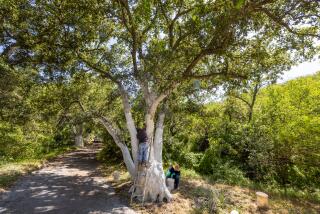Science/Medicine : Old Southern Oaks Periled
An unusual fungus could threaten the survival of the live oak tree in the South. The threat was discovered during a routine forestry expedition to the Mississippi Gulf Coast last month.
A culture taken to the U.S. Forest Service’s Stoneville Experiment Station proved to be Endothia parasitica, which has nearly wiped out the American chestnut tree, according to Darlene Slater of the Mississippi Forestry Commission.
The only surviving American chestnuts are believed to be shoots from stumps, although other members of the chestnut family, including the chinquapin of the South, appear to be immune to the fungus.
Slater said she believes she has since identified similar cases among live oaks in the Jackson area.
There is no available fungicide to kill the parasite.
Live oaks, evergreens that grow in humid coastal areas from Virginia to Texas, are among the oldest living things in the South. Often associated with old plantation sites, many are protected as historic landmarks, including an entire grove planted by the French in Florida for use in shipbuilding and a single tree in DeLisle, near Bay St. Louis, that is believed to be more than 1,000 years old.
A plant pathologist said the live oak so far appears to be doing a good job of resisting the parasite, which enters through an injury to the bark.





